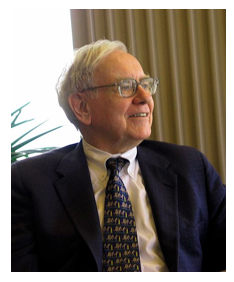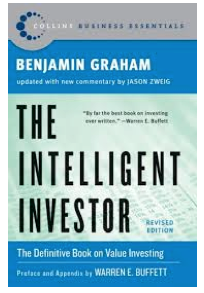Warren Buffett is the Best
The History of Berkshire Hathaway
Two High-Quality Companies
---
Who is Warren Buffett?
Warren Buffett is my hero, and in my opinion, he is the best investor ever. If you and I had invested in 10 shares of his Berkshire Hathaway (BRK-A) at the end of 1976 when Berkshire shares became available, our $890 10-share investment would be worth $172,000 today. The increase works out to a compound annual growth rate of 22.9%. We would have doubled our investment every three and a half years. I don’t know of anyone who can come close to Mr. Buffett’s returns! Warren Buffett Stocks
How did Mr. Buffett achieve such remarkable returns? He invested in undervalued high-quality companies using a fundamental value approach. His largest holdings, as of June 30, 2013, include:
Wells Fargo
Coca-Cola
IBM
American Express
Procter & Gamble
Wal-Mart
U.S. Bancorp
DIRECTV
DaVita HealthCare
Phillips 66
He has owned these leading companies for many years while ignoring the many ups and downs of the stock market.
Warren Buffett is someone I admire not only for his legendary investment skills, but also for his intelligence, wit, down-to-earth personality and generosity. Known as the “Oracle of Omaha,” his investing prowess has propelled him to become the second-wealthiest person on the planet, (behind Bill Gates).
Buffett believes the U.S. economy will strengthen during the next several years, because the American free enterprise system is alive and well and has worked splendidly during our 200-year history with the exception of a few minor glitches. And there is no reason to believe that America will fall apart during the next century or two.
Buffett’s first rule of investing is not to lose money. His second rule is not to forget the first rule. Another rule: invest in businesses so good that even a fool can run them, because someday, a fool will. He stays clear of bonds, gold and foreign companies. He sticks with U.S. companies.
Warren Buffett Biography
Buffett graduated from the University of Nebraska–Lincoln with a B.S. degree in Business Administration. He then enrolled at Columbia Business School after learning that Benjamin Graham, author of one of his favorite books, The Intelligent Investor, taught there. He earned an M.S. in Economics from Columbia Business School in 1951 at the age of 20.
In 1954, Buffett convinced Benjamin Graham to hire him as a securities analyst in New York. When Mr. Graham retired two years later, Buffett started his own investment company. His initial investments in Berkshire Hathaway, a textile manufacturing company and Government Employees Insurance Co. (GEICO) became huge investment successes and provided the foundation to generate large investment profits and cash flows. The profits and cash flows could then be invested in additional stocks. This simple formula snowballed into millions and then billions of capital under management.
The profit formula was simple, but Buffett’s investment strategy was more complex. He never strayed from what he was taught by his mentor, Benjamin Graham. Buffett learned to wait patiently for the stock price to decline to the desired level (well below the value of the company) and hold forever!
Warren Buffett stated clearly: “The basic ideas of investing are to look at stocks as business, use the market’s fluctuations to your advantage, and seek a margin of safety. That’s what Ben Graham taught us. A hundred years from now they will still be the cornerstones of investing.”
The Berkshire Hathaway Story
Berkshire Hathaway traces its roots to three textile companies: the Valley Falls Co. in Valley Falls, Rhode Island; the Berkshire Cotton Manufacturing Co. in Adams, Massachusetts; and the Hathaway Manufacturing Co. in New Bedford, Massachusetts.
When the first two companies merged with Hathaway in 1955, the textile industry in New England was in decline, and the new Berkshire Hathaway began to close some of its 15 manufacturing facilities.
In 1962, Warren Buffett began buying stock in Berkshire Hathaway after noticing the company’s stock price increased whenever the company closed a mill, even though the business was faltering. In 1964, the company made a preliminary offer of $11.50 per share to buy back Buffett’s shares. Buffett agreed to the deal. A few weeks later, Mr. Buffett received the offer in writing, but the offer was for only $11.375. The lower offer made Buffett angry. Instead of selling at the slightly lower price, Buffett decided to buy more of the stock to take control of the company and fire the president of Berkshire (which he did).
Buffett initially maintained Berkshire’s core business of textiles, but by the late 1970s, he was expanding into the insurance industry and other investments, including Government Employees Insurance Co. (GEICO). GEICO forms the core of Buffett’s insurance operations today and provides a major source of capital for Berkshire Hathaway’s other investments. By 1985, the last textile operations were shut down.
Buffett now claims that purchasing Berkshire Hathaway was the biggest investment mistake he ever made, even though his slip-up was a great learning experience. Investing in other businesses, such as insurance, would have paid off “several hundredfold,” according to Warren.
---Advertisement---
How to Use the Graham-Buffett Approach
The ultra-safe investing method I use in Cabot Benjamin Graham Value Investor is based on Graham and Buffett methodologies. Its goal is to protect your wealth and bring you double-digit returns. I apply the Graham-Buffett time-tested systems to bring my subscribers the best undervalued stocks in the market—and some of these stocks are selling at bargain prices right now.
During the past eight years, I have been recommending companies using my combined Graham- Buffett analysis with great success. My conservative Graham-Buffett type stocks increased 89.2% during the past eight years compared to a rise of just 42.5% for the Standard & Poor’s 500 Index. Some of the Graham-Buffett type stocks I have suggested are
Abbott Laboratories
Aflac
American Express
Canadian National Railway
Caterpillar
Coach
Deere & Co.
Exxon Mobil
Home Depot
IBM
Johnson & Johnson
MasterCard
McDonald’s Microsoft
PepsiCo
Procter & Gamble
Ross Stores
TJX Companies
Wal-Mart Stores
and many other high-quality industry leaders.
At first glance, the above list of companies appears to lack potential. But when you wait patiently for the stock price to decline to my Maximum Buy Price and sell when your stock achieves my Minimum Sell Price, profits add up very quickly.
Value stocks belong in everyone’s portfolio. Now is a great time to transition money into conservative, dividend-paying, undervalued companies.
Click here to join my long list of satisfied subscribers. You’ll be glad you did!
---
Value versus Growth
I want to comment briefly on another, related subject: Value versus Growth. I have always advised my readers to divide the stock portion of their portfolio into 50% value stocks and 50% growth stocks. Many investors, though, load up on growth stocks. They are exciting and fun, but value stocks will perform as well as growth stocks, will give you a smoother ride, and provide you with higher dividends. Just ask Warren Buffett.
The Intelligent Investor
Want to invest like super-investors Graham and Buffett? I strongly recommend reading Benjamin Graham’s book, The Intelligent Investor. In the book, Graham provides easy-to-use checklists to find stocks that are selling for less than they should be—stocks that will beat the market with minimal down-side risk. The Intelligent Investor is easy to read and easy to implement. Warren Buffett described the book as “by far the best book on investing ever written.”
My Graham-Buffett Strategy
The following four guidelines are part of the eight-guideline strategy that I use in Cabot Benjamin Graham Value Investor. You can easily find my complete analysis and latest buy recommendations in the Investor, but here is a partial list:
1) Free cash flow more than $20 million. 2) Return on equity more than 15%. 3) Positive earnings growth during the past 5 years with no deficit. 4) Dividends currently paid.
I screened my Benjamin Graham Common Stock Database and found two high-quality companies that fit my criteria. Both companies are leaders in their sector, and both have excellent future prospects.
GNC Holdings (GNC: 53.24) is a specialty retailer of health and wellness items, including vitamin, mineral and herbal supplements, and sports nutrition and diet products. GNC has more than 8,300 locations, including 6,200 retail locations in the U.S. (958 franchise stores and 2,190 Rite Aid franchise store-within-a-store locations.) Franchise operations are situated in 55 countries.
GNC’s new Gold Card rewards program has been a huge success, although the introduction of the card was costly. The Gold Card provides members with significant savings and could help boost sales and earnings during the next several quarters.
GNC’s expansion of its store-within-a-store and e-commerce presence in China offers substantial opportunities for the company. Sales increased 10% and EPS surged 23% during the last 12 months.
I expect sales to increase 11% and EPS to climb 20% to 3.05 for the 12 months ending 6/30/14. The 21.5 current P/E is somewhat high, but GNC’s growth is impressive. The company’s balance sheet is solid, the dividend yield is modest, and GNC shares are medium risk. The share price will likely reach my Minimum Sell Price of 78.98 within one to two years.
United Stationers (USTR: 40.87) is a leading wholesale distributor of business products, with sales of $5 billion. The company stocks a broad range of 130,000 items including technology products, traditional office products, janitorial and breakroom supplies, office furniture and industrial supplies. United Stationers maintains 64 distribution centers that deliver products to 25,000 dealers. This network enables the company to ship most products overnight to more than 90% of the U.S. and to offer next-day delivery to major cities in Mexico and Canada.
Sales in the industrial supplies category are up 31.5%, profiting from the acquisition of OKI Supply in the fourth quarter of 2012. Reduced corporate and government spending offset these gains, however. Sales were flat during the past 12 months ended 6/30/13, although EPS advanced 18%. Cost cuts, staff reductions and benefits from the OKI purchase boosted EPS.
I expect sales to increase 5% and EPS to climb 9% during the next 12 months. At 14.0 times current EPS and with USTR shares selling well below Standard & Poor’s discounted cash flow value of 53.30, the stock is undervalued. I expect USTR to advance to my Minimum Sell Price of 51.10 within one to two years.
I will continue to follow GNC, United Stationers and other blue-chip, high-quality companies in Cabot Benjamin Graham Value Investor. My October issue will include new undervalued Graham-Buffett type stocks. I hope you won’t miss it!
Sincerely,
J.Royden Ward
Analyst, Cabot Benjamin Graham Value Letter
Editor’s Note: You’ll find additional stocks selling at bargain prices in the Cabot Benjamin Graham Value Investor. In every issue, you’ll find my legendary Maximum Buy and Minimum Sell Prices for over 275 stocks.


